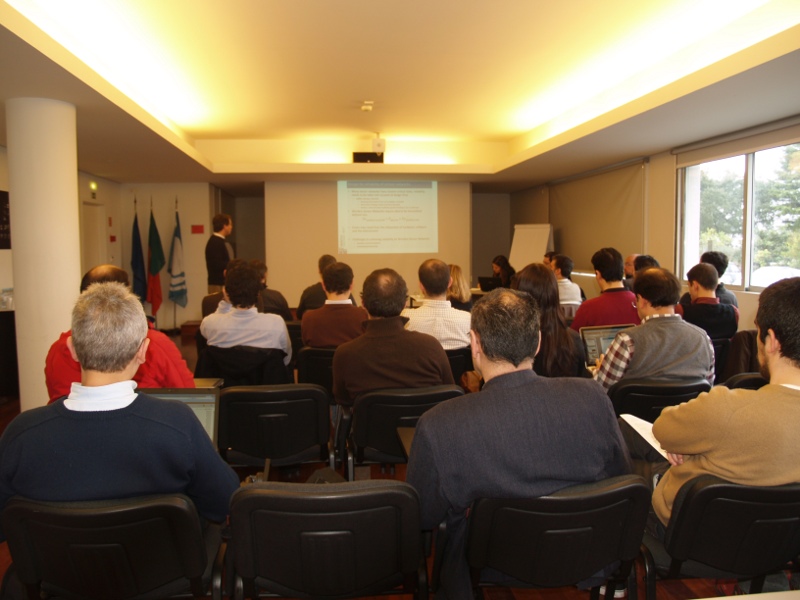INESC TEC organises seminar on wireless sensor networks
On 25 January, INESC TEC’s Telecommunications and Multimedia Unit (UTM) organised the seminar “Wireless Sensor Networks”. The aim was to identify and develop skills and synergies that can help converge individual efforts to benefit the Unit as a whole, and perfect the Unit’s critical mass, using that potential to provide complete solutions for a sustainable reality.
28th January 2013
The event included 10 individual presentations, divided by two sessions, which focused on the themes “application”, “networking” and “enabling technologies”. The seminar featured not only presentations from members of UTM, but also from researchers at the Information and Computer Graphics Systems Unit (USIG), the Optoelectronics and Electronic Systems Unit (UOSE) and the Robotics and Intelligent Systems Unit (ROBIS), represented by Marco Amaro Oliveira, Miguel Velhote and Aníbal Matos, respectively.
The seminar allowed the UTM to understand the range of their competences “in all layers of sensor networks, from application to electronics”, states Tânia Calçada, one of the event organisers. “There are skills at INESC TEC that allow us to develop sensors for humans to create avatars (UOSE), sensor networks integrated in underwater robots (ROBIS), embedded systems capable of assessing friction in real time in aircraft wings (Research Centre in Real-Time and Embedded Computing Systems – CISTER), or even expertise that helps us look for sensor network data with a variable set of features on the web (USIG)”, the researcher adds.
Following the seminar, the organisers scheduled a workshop where the aim will be to present INESC TEC’s expertise in sensor networks to companies. The ultimate goal is to promote and form partnerships. “We will be listing the laboratory resources deemed necessary to develop new projects, such as a permanent observatory for sea related variables”, Tânia Calçada concludes.


